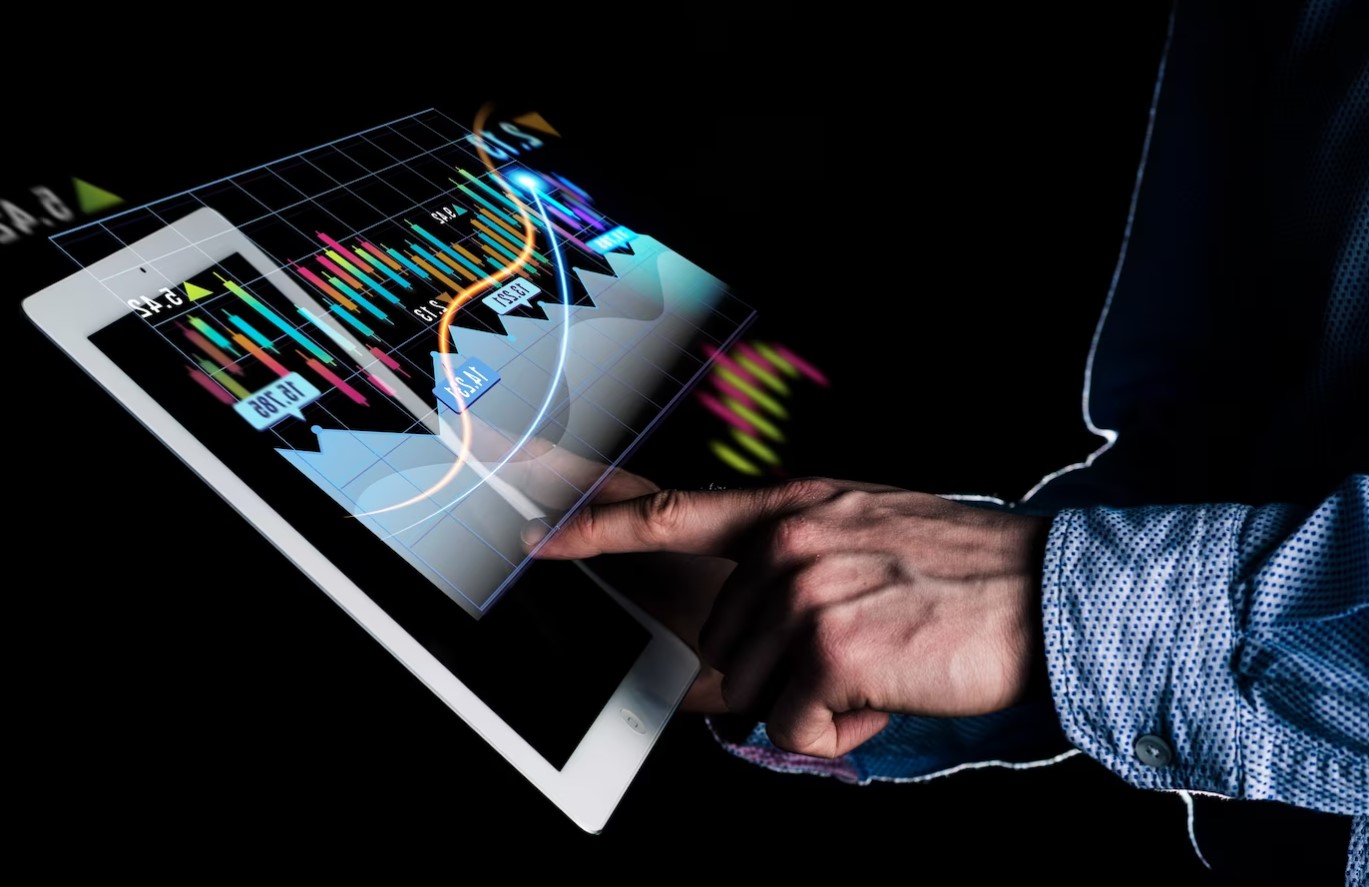The allure of automated profits in the ever-volatile world of finance has many turning to artificial intelligence (AI) for trading solutions. But with promises of riches often come hidden risks. So, can AI truly deliver on its profitability claims, or is it just another technological fad in the investment arena? Delve into this article to explore the potential and pitfalls of AI-powered trading, and understand whether it can truly translate to financial success.
Understanding AI Trading
Artificial Intelligence (AI) trading is a sophisticated approach to financial markets that relies on cutting-edge technology. At its core, AI trading involves the use of machine learning algorithms to interpret and analyze vast amounts of market data. These algorithms, equipped with the ability to adapt and learn from historical patterns, navigate the complexities of the financial landscape with unparalleled speed and precision.
In the realm of AI trading, machine learning algorithms play a pivotal role. These algorithms are designed to decipher intricate market trends and patterns, enabling them to make informed predictions about future market movements. By continuously learning and adjusting based on real-time data, AI trading systems strive to stay ahead of the curve, making split-second decisions that human traders may find challenging to match.
Data analysis is a cornerstone of AI trading, with algorithms sifting through massive datasets to identify potential opportunities and risks. Unlike traditional trading methods that may be influenced by emotions or subjective judgments, AI trading relies on objective data-driven insights. This data-centric approach not only enhances decision-making accuracy but also allows AI systems to adapt swiftly to changing market conditions, contributing to the dynamic and evolving nature of AI trading strategies.
Benefits of AI Trading
Incorporating Artificial Intelligence (AI) into trading strategies comes with a myriad of advantages, revolutionizing the financial landscape. Here are key benefits that make AI trading a compelling choice for investors:
- Increased Efficiency:
- Rapid Data Processing: AI trading systems can swiftly process vast datasets, enabling real-time analysis of market conditions.
- Quick Decision-Making: The speed of AI algorithms allows for faster decision-making, capitalizing on fleeting opportunities in the market.
- Reduced Human Error:
- Emotion-Free Trading: Unlike human traders who may be influenced by emotions, AI operates without emotional bias, leading to more objective and calculated decisions.
- Consistent Execution: AI systems execute trades with precision, avoiding common human errors that can occur due to fatigue or psychological factors.
- Enhanced Predictive Capabilities:
- Pattern Recognition: AI algorithms excel at recognizing complex patterns within historical data, providing insights into potential future market movements.
- Adaptive Learning: Machine learning enables AI systems to adapt and improve over time, refining their predictive capabilities as they encounter new market conditions.
- 24/7 Availability:
- Uninterrupted Operations: AI trading operates around the clock, unaffected by human limitations such as sleep or breaks, ensuring constant vigilance in monitoring market changes.
- Diversification of Strategies:
- Multi-Strategy Implementation: AI allows for the simultaneous execution of multiple strategies, diversifying investment approaches and mitigating risks across various market scenarios.
- Portfolio Optimization: AI trading systems can optimize portfolios by dynamically adjusting asset allocations based on real-time market data.
- Cost Efficiency:
- Lower Transaction Costs: AI can minimize transaction costs by executing trades at optimal times and prices, maximizing returns for investors.
- Resource Optimization: With automated processes, AI reduces the need for extensive human resources, making trading operations more cost-effective.
Understanding these benefits underscores why an increasing number of investors are turning to AI trading as a powerful tool to enhance their financial strategies.
Challenges in AI Trading
To gain a comprehensive understanding of the complexities in AI trading, let’s first visualize the challenges through a three-column table:
| Challenge | Description | Mitigation Strategies |
| Lack of Predictability | Unforeseen market events can confound AI algorithms. | Continuous refinement of algorithms based on emerging trends. |
| Market Uncertainties | Fluctuations and unexpected changes in market conditions. | Implementation of risk management protocols to navigate uncertainties. |
| Ethical Concerns | Questions regarding the ethical implications of AI-driven decisions. | Incorporation of ethical guidelines into AI programming. |
Challenges in Detail:
- Lack of Predictability: AI algorithms, while powerful, may struggle to anticipate entirely unforeseen market events. The ever-evolving nature of financial markets poses a challenge in predicting outcomes with absolute certainty. Continuous refinement and adaptation of algorithms based on emerging trends are essential to address this challenge effectively.
- Market Uncertainties: Financial markets are inherently volatile, subject to fluctuations and unexpected changes. AI trading systems must contend with the unpredictability of market conditions. Mitigation strategies involve the implementation of robust risk management protocols, allowing AI algorithms to navigate and respond to uncertainties effectively.
- Ethical Concerns: As AI systems make autonomous decisions, ethical concerns arise regarding the implications of these decisions on the broader financial landscape. To address this, developers and traders must incorporate ethical guidelines into the programming of AI algorithms, ensuring responsible and transparent decision-making.
Navigating these challenges is crucial for the successful integration of AI into trading strategies. While AI offers significant benefits, acknowledging and addressing these challenges is essential to building trust and reliability in the use of AI in financial markets.
Risk Management in AI Trading
One of the critical aspects of integrating Artificial Intelligence (AI) into trading strategies is effective risk management. In the dynamic world of financial markets, risks are inherent, and AI trading systems must be equipped to handle them adeptly.
Identifying and Assessing Risks
Before AI algorithms can navigate risks, it’s crucial to identify and assess potential pitfalls. This involves a meticulous examination of various factors, including market volatility, economic indicators, and external events that may impact trading outcomes. AI systems need to be programmed to recognize and evaluate these risks in real-time, allowing for swift and informed decision-making.
Strategies for Mitigation
Once risks are identified, the next challenge is to implement robust strategies for their mitigation. This involves a multi-faceted approach that combines technology and human oversight. AI trading systems can be programmed to automatically adjust risk parameters based on market conditions, limiting exposure during periods of uncertainty. Simultaneously, human traders play a crucial role in overseeing AI decisions, providing an additional layer of risk management through their experience and judgment.
By dividing the risk management process into these two sub-sections – identifying and assessing risks, and implementing strategies for mitigation – AI trading strategies can enhance their resilience in the face of the ever-changing dynamics of financial markets.
Common Misconceptions About AI Trading
In the realm of Artificial Intelligence (AI) trading, several misconceptions often cloud a clear understanding of its capabilities and limitations. Let’s debunk some of these myths to provide a more accurate perspective:
- Misconception: AI Trading Guarantees Profits: trading, while powerful, is not a guaranteed profit generator. Markets can be unpredictable, and AI systems, like any trading strategy, are subject to uncertainties.
- Misconception: AI Trading Is Fully Automated: Contrary to popular belief, AI trading systems often require human oversight. While algorithms execute trades, human intervention is necessary for strategic decision-making and adjusting algorithms based on market shifts.
- Misconception: AI Predicts Market Trends with Certainty: AI excels at analyzing historical data to identify patterns, but predicting future market trends with absolute certainty is challenging. Markets can be influenced by unforeseen events that algorithms may not predict.
- Misconception: AI Trading Is Only for Experts: While AI trading involves complex algorithms, many user-friendly platforms allow individuals with basic financial knowledge to engage in AI trading. Education and understanding are key to utilizing AI tools effectively.
- Misconception: AI Trading Is Impervious to Losses: AI systems can experience losses during unfavorable market conditions. Effective risk management is crucial to mitigate potential downsides and protect investment portfolios.
- Misconception: AI Trading Ignores Fundamental Analysis: AI systems often incorporate fundamental analysis alongside technical analysis. The integration of both approaches enhances the depth and accuracy of trading decisions.
- Misconception: AI Trading Is Prone to Manipulation: While concerns about market manipulation exist, regulatory measures and ethical guidelines aim to ensure the integrity of AI trading systems, reducing the risk of manipulation.
By dispelling these misconceptions, individuals can approach AI trading with a more informed perspective, undersanding both its capabilities and limitations in the context of the dynamic financial landscape.

